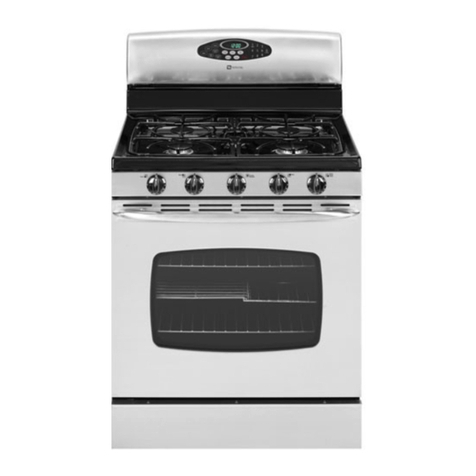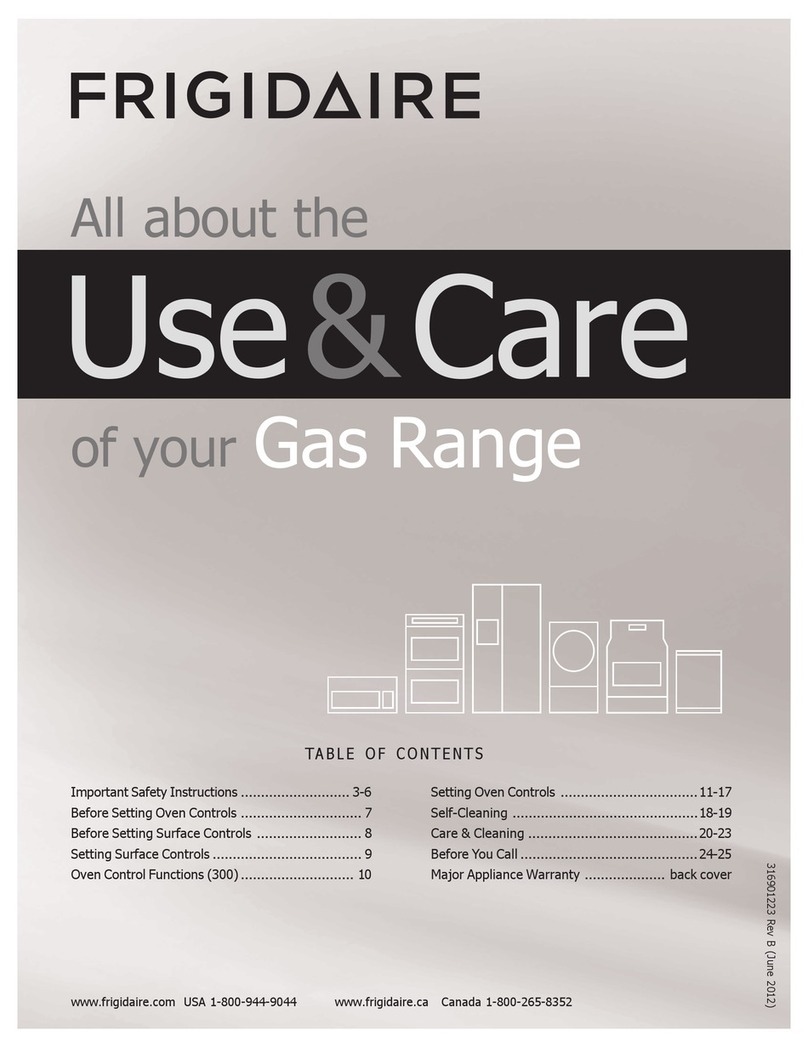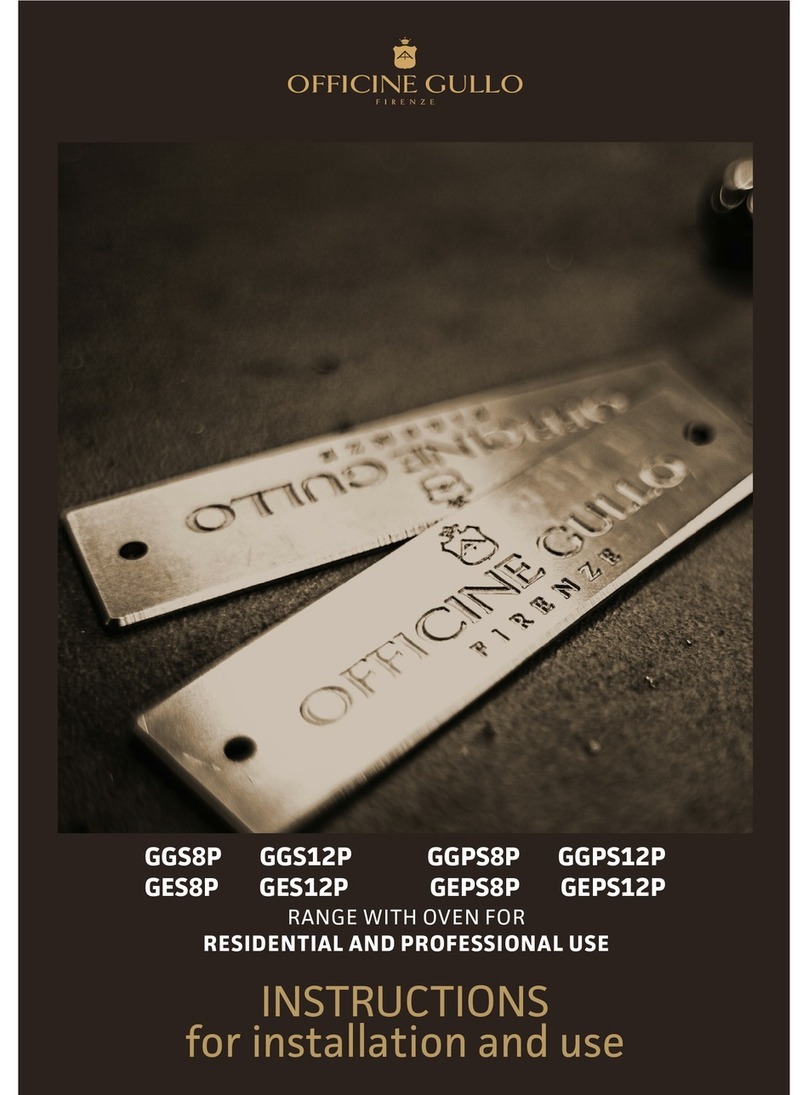
10
MAINTENANCE
Care and Cleaning
The complete range should be given a periodic cleaning. Lint and grease suspended in the air tend
to collect in air passages. Therefore, all flueways, air passages and openings, burner ports, primary
air openings, etc. should be periodically cleaned to prevent clogging.
Exterior
PAINTED SURFACE: Allow equipment to cool after use and wash with a mild detergent or soap
solution. Dry thoroughly with a dry cloth.
STAINLESS STEEL SURFACES: To remove dirt, grease, or product residue from stainless steel,
use ordinary soap and water (with or without detergent) applied with a sponge or cloth. Dry thor-
oughly with a clean cloth.
To remove grease and food platter, or condensed vapors that have baked on the equipment, ap-
ply cleanser to a damp cloth or sponge and rub cleanser on the metal in the direction of the pol-
ishing lines on the metal. Rubbing cleanser as gently as possible in the direction of the polished
lines will not mar the finish of the stainless steel. NEVER RUB WITH A CIRCULAR MOTION.
Soil and burnt deposits which do not respond to the above procedure can usually be removed by
rubbing the surface with SCOTCH-BRITE scouring pads or STAINLESS scouring pads. DO NOT
USE ORDINARY STEEL WOOL as any particles left on the surface will rust and further spoil the
appearance of the finish. NEVER USE A WIRE BRUSH, STEEL SCOURING PADS (EXCEPT
STAINLESS), SCRAPER, FILE, OR OTHER STEEL TOOLS. Surfaces which are marred collect
dirt more rapidly and become more difficult to clean. Marring also increases the possibility of cor-
rosive attack.
To remove heat tint: Darkened areas sometimes appear on stainless steel surfaces where the
area has been subjected to excessive heat. These darkened areas are caused by thickening of
the protective surface of the stainless steel and are not harmful. Heat tint can normally be re-
moved by the foregoing, but tint which does not respond to this procedure calls for a vigorous
scouring in the direction of the polish lines, using SCOTCH-BRITE scouring pads or a STAIN-
LESS scouring pad in combination with a powdered cleanser. Heat tint action may be lessened
by not applying or reducing heat to equipment during slack periods.
OPEN TOP SECTION
DAILY: Wipe top with burlap or other grease absorbing material to remove spillovers, grease,
etc. before they burn in.
WEEKLY: Open Top Section should be washed in a solution of washing soda and water (after
they are entirely cooled). Remove and wash drip pan under burners. Brush burner head weekly
with a stiff wire brush and clean clogged ports with stiff fire or ice pick. Excessive grease build up
may be removed from burners by soaking in a solution of washing soda. Dry Burners by inverting
on oven rack in a low temperature oven.


































